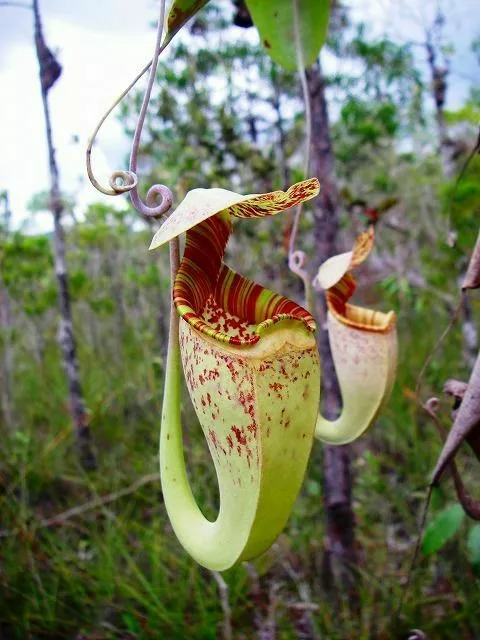In the world of plants, there are many types of plants that have developed unique defense strategies to survive insect attacks. One example of a plant known as the “pitcher plant” or “kantong semar”. In Indonesian is known for how it attracts, captures, and digests insects as a source of nutrition. Let’s delve deeper into it and how it battles insects.
Appearance and Habitat
Carnivorous pitcher plants can be found in various locations, especially in tropical and subtropical climaPitcher plants are carnivorous that can be found in various locations, especially in tropical and subtropical climates. They typically thrive in soil with high humidity and poor nutrient content. Some species of them even inhabit frequently flooded areas, such as swamps.

Their leaf structure, which resembles a pouch or funnel called a ‘pitcher,’ has striking colors and intriguing patterns to attract the attention of insects; consequently, it is the most distinctive feature of them.
How Pitcher Plants Work
Pitcher plants serve two main purposes with their pitcher structures. First, they are used to attract insects by emitting enticing aromas and colors. Second, once insects enter these pitchers, the plants use them as traps to capture and digest the insects.
Strategies for Attracting Insects
To lure insects, pitcher plants employ various effective methods:
- Aroma and Colors: Pitcher plants often have vibrant colors like red or green and emit scents resembling nectar or enticing food for insects.
- Ornamentation: Some species of them have adornments like nectar glands that provide a false food source for visiting insects.
- Patterns: Intriguing patterns inside the pitchers, such as stripes or spots, can trap insects when they attempt to approach or enter.
Capturing and Digesting Insects
Once insects enter the pitcher plant, they struggle to escape due to the slippery and difficult-to-climb interior surface. The plant produces digestive enzymes that break down the trapped insects. Aiding in the breakdown of their tissue into nutrients that the pitcher plant can absorb.
Benefits for Pitcher Plants
Pitcher plants rely on insects as their primary source of nutrition because they often grow in nutrient-poor soil. Therefore, this carnivorous strategy helps them survive in challenging environments.
Pitcher plants are a fascinating example of how plants can develop unique strategies to protect themselves and obtain the nutrients they need. Although they may appear unusual, they are a captivating demonstration of the diversity of nature and plant adaptations in the face of environmental challenges.






